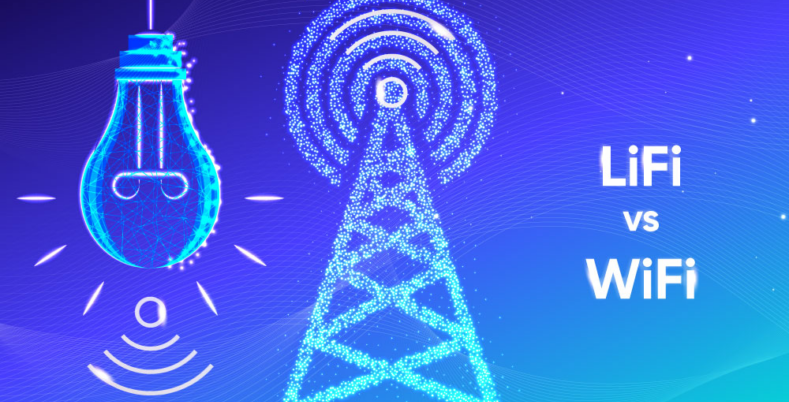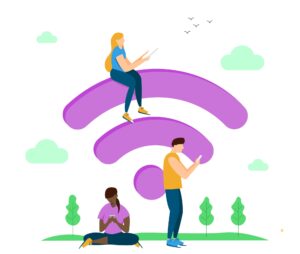Wireless technologies are making our lives simple. It's a booming tech term transforming how we communicate and access the Internet. Wireless technologies make it easy to connect to the Internet at any time or from anywhere without the need for cables and other wires. Wifi and Li-Fi are the two emerging technologies that make the impossible possible when it comes to internet connectivity.
Even though Wi-Fi remains a household name, Li-Fi is less known, but it holds the power to transform how we access the internet. But do you know the exact differences between the two?
Well, it's a point of discussion right now. In this blog, we'll explore the key differences between Lifi and Wi-Fito to help you make a well-informed decision.
Let's dive in!
Understanding About WiFi
You've heard the term wifi at different points, such as public wifi, offices, phones, malls, restaurants, etc. Wifi makes use of radio waves to transmit data between devices. It's a technology that lets us connect smartphones, laptops, and more to the internet without cables, offering reliable and convenient internet access.
Features of WiFi
Below are some of the critical features of wifi:
Multiple Device Connectivity:
With wifi access, various devices can be connected simultaneously.
Higher Coverage:
Wifi covers a long-distance area, allowing access to internet connectivity.
Range and Speed:
Wifi covers a range of up to 100 meters indoors, and the speed depends on the standards.
Cost-Effective
Wifi is more budget-friendly than Li-Fi. Thus, it's a go-to choice for most organizations and businesses.
Understanding Li-Fi
LiFi, the short form of Light Fidelity, is a wireless networking technology that uses light waves for data transmission. Unlike Wi-Fi, which relies entirely on radio waves, LiFi uses light-emitting diodes to create high-speed, interference-free, secure connections.
LiFi needs a line of sight between the transmitter and receiver so that it can be only used in environments of direct visual communications.
Features of Li-Fi
Top-Notch Security
Li-Fi uses light wave technology, which makes it difficult for hackers to steal sensitive data.
No Congestion
LiFi is not affected by multiuser degradation or congestion in the network.
Less Energy Consumption
Li-Fi consumes less energy, making it more environmentally friendly than wifi technology. This is because Lifi uses LED lights that save electricity.
Reduced Latency
Compared to wifi, LI-Fi has a three times lower latency. Moreover, it has the potential to enhance creativity, automate tasks, and advance applications like augmented and virtual reality.
The Key Differences: Lifi vs Wifi
Now that we have explored the technological concept of Lifi and WiFi, let us get through its differences, Lifi vs Wifi.
| Parameter | WiFi | LiFi |
| Frequency Range | WiFi uses Radio Frequency ranging from 3Khz to 300 GHz. | LiFi uses Visible light (400 THz to 800 THz) |
| Name | It’s termed as Wireless Fidelity | It’s termed as Light Fidelity |
| Invented By | In 1991 by NCR Corporation | In 2011 by Professor Harald Haas |
| Standard | IEEE 802.15.7 | IEEE 802.11 |
| Power Consumption | High power consumption | Low power consumption |
| Security | Radio frequency signals can pass through the walls, thus achieving secure data transfer is challenging | As the light cannot pass through the walls, LiFi facilitates secure data transfer |
| Interference | Less prone to interference | Prone to interference |
| Bandwidth | Limited bandwidth | Unlimited bandwidth |
| Coverage Distance | 32 meters | 1 meters |
| Applications | Used for internet browsing purpose with the help of Wi-Fi hotspot | Used in airlines |
Summing it Up
Lifi and Wi-Fi are two famous and commonly used wireless networking technologies. Wifi has become a regular part of our daily lives, while LiFi offers immense exciting possibilities for the future due to its high-speed, secure, and interference-free communication. Even though it won't replace the wifi technology, it can complement various applications.
Lastly, both wifi and Li-Fi have their positives and negatives. The right solution depends on your requirements and the environment in which it will be used. To enhance your knowledge of tech-related topics, check out our blog section.
Read More:








